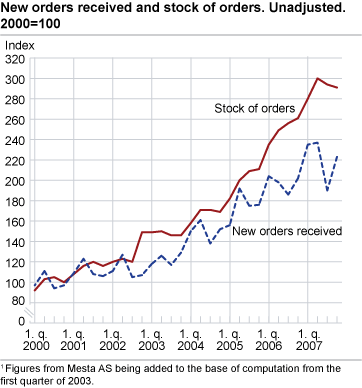Content
Published:
This is an archived release.
Boom in commercial building market
While the inflow of new residential building projects decreased, Norwegian contractors experienced a sharp increase in other building projects over the course of 2007.
At the start of 2008, the value of the companies’ order reserves for new non-residential buildings - mostly new commercial buildings - was 41 per cent higher than a year ago. In comparison, the value of orders for new residential buildings was 12 per cent lower than at the same time last year.
The inflow of new renovation orders for non-residential buildings increased in 2007, and the value of order reserves for renovation projects was 17 per cent higher at the beginning of 2008 compared with the same time last year. The value of residential building renovation reserves decreased by 6 per cent in the same period.
Stable civil engineering activity
The value of order reserves of civil engineering works decreased by 2 per cent during the fourth quarter of 2007 and is now 4 per cent higher than at the same time in 2006.
The value of order reserves for the entire construction industry fell by 1 per cent in the third quarter of 2007, but remains 11 per cent higher than at the end of the third quarter of 2006.
Tables:
Contact
-
Statistics Norway's Information Centre
E-mail: informasjon@ssb.no
tel.: (+47) 21 09 46 42

